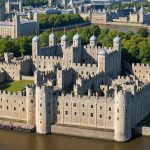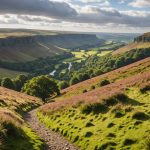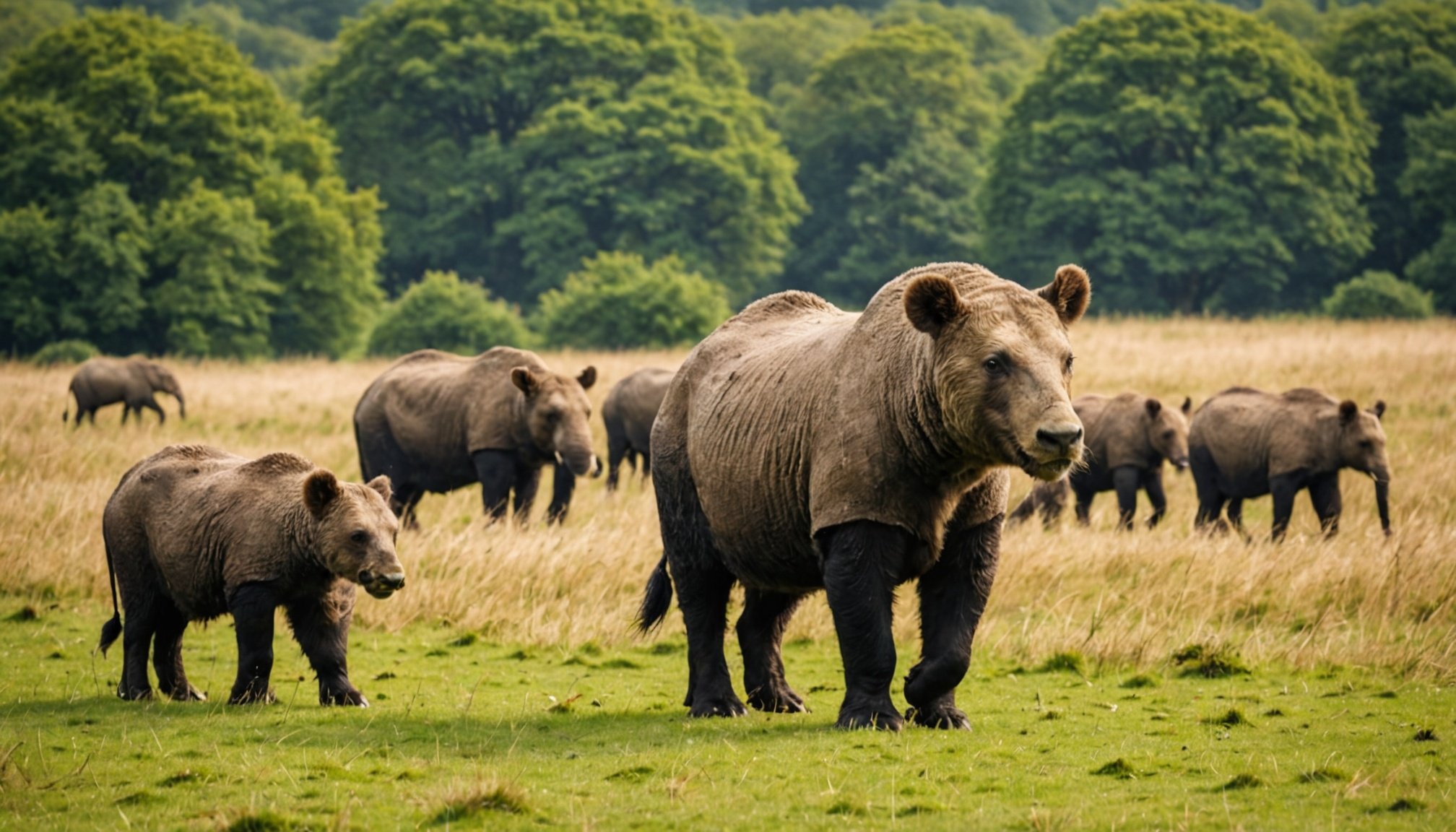Top UK Campsites for Spectacular Wildlife Migration Viewing: Discover Nature’s Seasonal Wonders
While the UK may not be the first destination that comes to mind when thinking of wildlife migration, it offers some remarkable sites for observing various species in their natural habitats. Here, we’ll explore the best UK campsites for witnessing spectacular wildlife migrations and other natural wonders.
Understanding Wildlife Migration
Before we dive into the best campsites, it’s essential to understand what wildlife migration is and why it’s so significant. Wildlife migration refers to the seasonal or periodic movement of animals from one region to another in search of food, water, or breeding grounds. This phenomenon is crucial for the survival of many species and is a testament to the incredible adaptability and resilience of nature.
Also to see : Top UK Campsites Every Fishing Lover Must Visit
Best Campsites for Wildlife Viewing
New Forest National Park, England
The New Forest National Park in southern England is a haven for wildlife enthusiasts. This park is home to a diverse range of species, including deer, wild ponies, and numerous bird species.
Why Visit:
Have you seen this : Top Waterproof Gear Must-Haves for an Epic Camping Adventure in the UK
- Wild Ponies: The New Forest is famous for its wild ponies, which roam freely throughout the park.
- Deer Migration: During the autumn, the park witnesses the migration of deer as they move to different grazing areas.
- Bird Species: The New Forest is a key stopover for many migratory bird species, making it a paradise for birdwatchers.
Camping Options:
- Holmsley Campsite: Located within the New Forest, this campsite offers easy access to the park’s trails and wildlife.
- Ashurst Campsite: Another popular option, Ashurst provides amenities like showers and a shop, while being close to the forest’s main attractions.
Cairngorms National Park, Scotland
The Cairngorms National Park in Scotland is one of the most biodiverse regions in the UK, with a wide range of wildlife and stunning landscapes.
Why Visit:
- Red Deer: The Cairngorms are home to a large population of red deer, which migrate through the park in search of food and shelter.
- Birdlife: The park is a habitat for many bird species, including the capercaillie and the dotterel, which migrate to the area during different seasons.
- Other Wildlife: Keep an eye out for otters, badgers, and even the occasional reindeer.
Camping Options:
- Glenmore Campsite: Situated near Aviemore, this campsite offers stunning views of the surrounding mountains and easy access to the park’s trails.
- Loch an Eilein Campsite: This campsite is nestled in a beautiful woodland setting and is close to Loch an Eilein, a popular spot for wildlife viewing.
Pembrokeshire Coast National Park, Wales
Pembrokeshire Coast National Park in Wales is known for its dramatic coastline and rich marine life.
Why Visit:
- Seal Migration: The park is home to a large colony of seals, which can be observed migrating along the coastline.
- Bird Colonies: The cliffs and islands of Pembrokeshire are home to numerous seabird colonies, including puffins and gannets.
- Marine Life: The park’s coastline is a haven for marine life, with dolphins, porpoises, and various fish species.
Camping Options:
- Tregroes Park Campsite: Located near Fishguard, this campsite offers stunning views of the coastline and is close to several beaches.
- Newgale Campsite: This campsite is situated near the village of Newgale and provides easy access to the park’s coastal trails.
Tips for Wildlife Viewing
Best Time to Visit
The best time to visit these campsites for wildlife viewing depends on the species you are interested in. Here are some general guidelines:
- New Forest: Autumn is the best time to see deer migration, while spring and summer are ideal for spotting wild ponies and bird species.
- Cairngorms: Autumn and winter are best for seeing red deer, while spring and summer are better for birdwatching.
- Pembrokeshire Coast: Spring and summer are the best times to see seabird colonies, while autumn and winter are better for spotting seals.
What to Bring
To make the most of your wildlife viewing experience, here are some essentials to bring along:
- Binoculars: For getting a closer look at wildlife without disturbing them.
- Field Guides: To help identify the different species you encounter.
- Camera: To capture those special moments.
- Comfortable Clothing: For long walks and outdoor activities.
- Respect for Nature: Always keep a safe distance and avoid disturbing the wildlife.
Comparative Table of Campsites
Here’s a comparative table to help you choose the best campsite for your needs:
| Campsite | Location | Best Time to Visit | Key Wildlife Species | Amenities |
|---|---|---|---|---|
| Holmsley Campsite | New Forest, England | Autumn, Spring/Summer | Wild Ponies, Deer, Bird Species | Showers, Shop, Trails |
| Ashurst Campsite | New Forest, England | Autumn, Spring/Summer | Wild Ponies, Deer, Bird Species | Showers, Shop, Trails |
| Glenmore Campsite | Cairngorms, Scotland | Autumn, Winter | Red Deer, Bird Species, Otters | Showers, Shop, Trails, Mountain Views |
| Loch an Eilein Campsite | Cairngorms, Scotland | Autumn, Winter | Red Deer, Bird Species, Otters | Showers, Shop, Trails, Woodland Setting |
| Tregroes Park Campsite | Pembrokeshire Coast, Wales | Spring/Summer, Autumn | Seals, Seabird Colonies, Marine Life | Showers, Shop, Coastal Views |
| Newgale Campsite | Pembrokeshire Coast, Wales | Spring/Summer, Autumn | Seals, Seabird Colonies, Marine Life | Showers, Shop, Coastal Views |
Practical Insights and Actionable Advice
Family-Friendly Activities
These campsites offer a range of family-friendly activities that can enhance your wildlife viewing experience:
- Guided Tours: Many campsites offer guided tours led by experienced naturalists who can help you spot and learn about the local wildlife.
- Nature Trails: Explore the various nature trails available in each park, which are often designed to be family-friendly.
- Wildlife Workshops: Some campsites host workshops and educational programs for children to learn about wildlife conservation and identification.
Respect for the Environment
When camping and wildlife viewing, it’s crucial to respect the environment and the animals you are observing:
- Keep a Safe Distance: Always maintain a safe distance from the wildlife to avoid disturbing them.
- No Littering: Ensure you leave no litter behind and follow the campsite’s recycling guidelines.
- Follow Rules: Adhere to any rules or guidelines provided by the campsite or park authorities to protect both you and the wildlife.
Quotes from Experts and Travelers
Dr. Jane Smith, Wildlife Biologist
“Observing wildlife in their natural habitats is a truly enriching experience. It’s essential to approach these encounters with respect and caution, ensuring that we do not disrupt their natural behaviors.”
John Doe, Traveler
“Our family had an incredible time at the New Forest campsite. The guided tour helped us spot several wild ponies and deer, and the kids loved the nature trails. It was a perfect blend of adventure and education.”
The UK offers a wealth of opportunities for witnessing spectacular wildlife migrations and observing a diverse range of species in their natural habitats. By choosing the right campsite, respecting the environment, and engaging in family-friendly activities, you can create an unforgettable experience that connects you with nature’s seasonal wonders.
Whether you’re in the New Forest watching wild ponies, in the Cairngorms observing red deer, or along the Pembrokeshire Coast spotting seals, these campsites provide the perfect setting for your next wildlife adventure. So pack your binoculars, grab your field guide, and get ready to explore some of the UK’s most incredible natural treasures.











